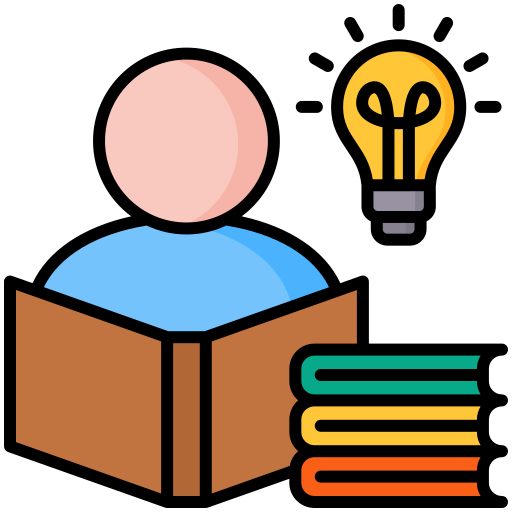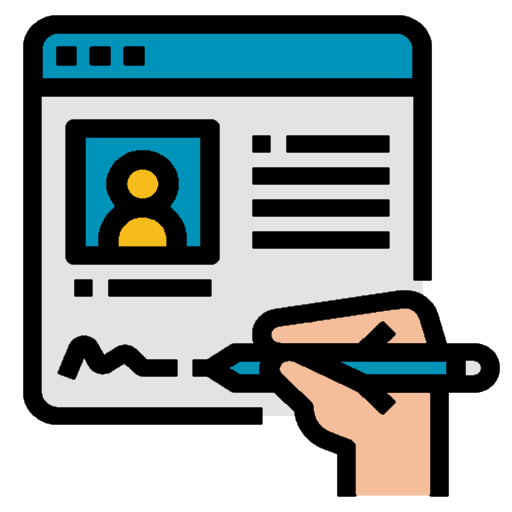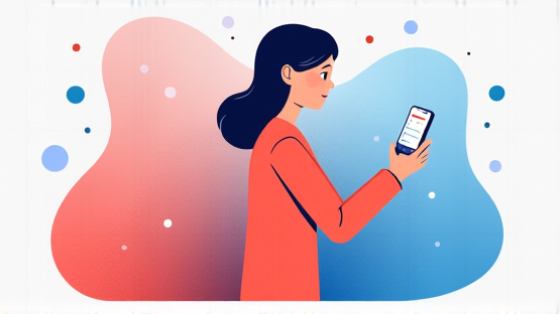
Introduction to Quantum Physics
A beginner-friendly overview of atoms, quantum behaviour, wave–particle duality, superposition, entanglement, tunnelling and real-world quantum technologies.
Year 6
Beyond the Curriculum


Black Holes
An introduction to black holes, their origins, structure, effects on space-time, and key discoveries.
Year 6
Science


The Amazing Body Machine
Exploring how our bodies work like super machines that need exercise, good food, and hygiene to stay strong, healthy, and protected.
Year 2
Science


States of Matter
An exploration of solids, liquids, and gases, how their particles behave, and how energy causes them to change states through melting, freezing, boiling, and condensation.
Year 4
Science


The Food Chain and Energy Flow
This topic explores how energy from the sun moves through producers, consumers, and decomposers, forming food chains and food webs that connect all living things in an ecosystem.
Year 2
Science


Black Holes: From Theory to Observation
An accessible exploration of what black holes are, how they form, the parts they contain, their types and roles in galaxies, and the key evidence and ideas that revealed them.
Year 6
Beyond the Curriculum


The Fibonacci Sequence and the Golden Ratio
Explores the origin, structure, and significance of the Fibonacci sequence, its appearance in nature, its link to the golden ratio, and its influence on art, science, and design.
Year 6
Beyond the Curriculum


Prime Numbers: The Building Blocks of Mathematics
Explores prime numbers, their properties, history, importance in arithmetic, and their surprising applications in nature and modern technology.
Year 6
Beyond the Curriculum


Imagination Machines: The Power of Thought Experiments and Paradoxes
Explores how thought experiments and paradoxes—from ancient Greece to modern physics—help reveal the limits of our understanding and lead to major scientific and philosophical breakthroughs.
Year 6
Beyond the Curriculum


Infinity: The Endless Idea
Explores the concept of infinity, its history, paradoxes, mathematical uses, and how it challenges our understanding of numbers and the universe.
Year 6
Maths


The Periodic Table: Cracking the Code of Elements
Explores the discovery, structure, and organisation of the Periodic Table, the properties of metals, non-metals, and metalloids, and how elements form the building blocks of everything in the universe.
Year 6
Science


99 Nights in the Forest: The Science of Survival
Explores how physics and chemistry explain the natural wonders of life in the forest — from campfires and sound to light, forces, and magnetism — showing that science is everywhere in nature.
Year 4
Science


The Mystery of Light and Shadows
Explores how light travels in straight lines, creates shadows, reflects off surfaces, and reveals its strange wave-particle duality and observer effect in quantum science.
Year 6
Science


The Story of Atoms – From Stardust to You
Explores what atoms are, where they came from, how they form elements, and how they connect everything in the universe — from stars to human beings.
Year 5
Science


Tutankhamun and Ancient Egypt
Explores the life, death, and legacy of Tutankhamun, the boy king of Ancient Egypt, and the discovery of his tomb by Howard Carter in 1922.
Year 4
History


Understanding Artificial Intelligence
Explores how AI learns from data using datasets, training, and inference, and how it impacts society, from recognising images to supporting medicine and translation.
Year 5
Computing


Ancient Egyptian Hieroglyphics
Explores how ancient Egyptians created and used hieroglyphics, their importance in religion, administration, and storytelling, and how they were finally decoded after 1400 years of mystery.
Year 5
History


Plant Detectives: How Plants Shape Our World
Explores how plants provide us with food, clothes, buildings, medicines, and everyday materials, showing their importance and the need for sustainability.
Year 2
Science


The Story of Numbers
Explores how numbers were invented and developed through history, from pebbles and tally marks to Roman numerals, zero, and the digital age.
Year 4
Maths


The Human Senses and Perception
Explores how our senses detect information, how signals are transmitted to the brain, and how perception and sensory integration work together to shape our understanding of the world.
Year 4
Science


Asking Why: The Science of Curiosity
Explores how curiosity leads to scientific discovery, explaining the scientific method, famous discoveries, and how asking 'why' helps us understand the world.
Year 4
Science


Mini-Me vs Transformation: Animal Life Strategies
Explores the two main growth strategies in animals: the 'mini-me' plan where young resemble adults, and the 'transformation' plan where they undergo dramatic change to survive different environments.
Year 2
Science


Animal Life Cycles
A study of how animals grow and change from birth to adulthood, exploring offspring, growth patterns, direct and indirect development, special names for baby animals, and the importance of understanding life cycles in nature and conservation.
Year 2
Science


Everyday Materials and Their Properties
A KS1 topic exploring common materials, their properties, and how they are used for different purposes in everyday life.
Year 2
Science


Journey Through the Digestive System
An exploration of how food travels through the human digestive system, from the mouth to the large intestine, and how the body extracts nutrients and energy.
Year 4
Science


Precocial and Altricial Animals
Exploring how different animals are born and develop, comparing 'ready-to-go' precocial species with dependent altricial ones, and how these strategies relate to evolution and survival.
Year 5
Science


Parts of a Flowering Plant
Explores the four main parts of a flowering plant—roots, stems, leaves, and flowers—and how they work together to help the plant live, grow, and reproduce.
Year 2
Science


Viking Runes
Exploration of Viking runes, their origins, meanings, uses, and cultural importance from everyday life to magical beliefs.
Year 4
History


The British Empire
Exploring how the British Empire expanded across the world, its impact on different peoples, cultures, and economies, and the lasting legacy it left behind.
Year 6
History


The Gunpowder Plot
A KS2 topic exploring the events of November 5th, 1605, when Guy Fawkes and a group of conspirators planned to blow up the Houses of Parliament in protest against religious persecution under King James I.
Year 5
History


Diwali – The Festival of Lights
Exploring the meaning, traditions, stories, and global significance of Diwali, a five-day festival celebrating light over darkness and good over evil.
Year 4
Religious Education


Viking Gods and Myths
An exploration of Viking mythology, key gods like Odin, Thor, Freyja, Loki, and Heimdall, and the lessons behind their stories and beliefs.
Year 4
History


AI and the Parent Portal
Exploring how a school plans to replace old systems with one smart AI-powered Parent Portal that helps teachers, parents, and students manage learning, communication, and data safely.
Year 6
Beyond the Curriculum


Understanding Money: Earning, Saving, Spending, and Borrowing
A KS2 guide to understanding how money works, covering earning, saving, budgeting, borrowing, and giving. It explains where money comes from, how it grows, and why making smart choices matters.
Year 5
Beyond the Curriculum


Eastbury Manor, The Great Plague, and The Great Fire of London
A KS1 topic exploring life in the 1600s through Eastbury Manor, the Great Plague, and the Great Fire of London — how people lived, what happened during these disasters, and what lessons were learned.
Year 1
History


The Science of Dreams
This topic explores what dreams are, why we dream, the stages of sleep, and how our brains stay active at night to sort memories, practise emotions, and even solve problems.
Year 3
Science


Where Does the Sun Go at Night?
A child-friendly exploration of day and night, explaining how the Earth's rotation makes the sun appear to rise and set, and how this affects life on Earth.
Year 1
Science


The Science of Rainbows
Exploring how light and water droplets create rainbows, the order of colours, the science of refraction, and myths and facts about rainbows.
Year 1
Science


Digital Detectives: Online Safety and Digital Footprints
A Year 4 lesson about online safety, understanding digital footprints, protecting personal information, and behaving kindly and responsibly online.
Year 4
Computing


Stone Age: From Rocks to Farming
An exploration of how humans lived, invented, and evolved during the Stone Age, from nomadic hunters to settled farmers building villages like Skara Brae.
Year 4
History


Evolution of Human Communication
A KS2 exploration of how human communication evolved from early gestures and sounds to speech, writing, and modern language systems.
Year 4
History


Understanding Big Numbers and Factorials
An engaging exploration of how quickly numbers grow using factorials, illustrated through shuffling cards and understanding possibilities.
Year 4
Maths


Myths and Legends: Magical Creatures and Lessons
KS1 topic exploring famous mythical creatures, their stories, and the lessons they teach about courage, kindness, and imagination.
Year 2
English


Exploring the Universe: Gravity, Time, Quantum, and the Big Bang
Introducing children to the universe, gravity, space-time, time travel, quantum theory, string theory, the Big Bang, black holes, and the idea that we are made of stardust.
Year 4
Science


Introduction to Space and the Universe
Introduces space and the universe, covering the Solar System, Earth’s rotation and seasons, key scientists, and common space myths and misconceptions.
Year 4
Science


Biological Symbiosis: Types and Importance
Explains symbiosis and its types—mutualism, commensalism, and parasitism—with examples, activities, and emphasis on their role in ecosystem balance.
Year 4
Science


The Life and Growth of Tiger Cubs
Summarises tiger cub life for KS1, covering their birth, growth, diet changes, survival needs, and the mother’s vital role in protection and hunting lessons.
Year 2
Science


The Viking Age: Life, Travel, and Legacy
Explores the Viking Age, covering their roles as warriors, farmers, traders, and explorers, daily life, beliefs, language, runes, and lasting cultural influence.
Year 4
History


Year 4 Geography: World Knowledge
Summarises Year 4 Geography, covering world regions, landmarks, climate, settlements, resources, and essential mapping and fieldwork skills.
Year 4
Geography


Introductory World Geography for Young Learners
Introduces world geography for young learners, covering continents, oceans, UK countries, place comparisons, key geography terms, and basic map and fieldwork skills.
Year 1
Geography


Classifying Animals, Diet, and Human Senses
Introduces Year 1 animal science, covering animal classes, diets, body adaptations, and the human body with its five senses.
Year 1
Science


Basic Plant Identification and Structure
Introduces Year 1 plant studies, covering wild and garden plants, deciduous and evergreen trees, plant parts and functions, with activities for observation and comparison.
Year 1
Science


Essential Principles of Electricity and Circuits
Introduces electricity and simple circuits, explaining components, switches, conductors, and insulators, with safety guidance and ideas for scientific observation.
Year 4
Science


The Fundamental Science of Sound
Introduces sound as vibrations travelling through different media, explaining pitch, volume, and distance, with examples and simple experiments for students.
Year 4
Science


States of Matter and Phase Changes
Explains states of matter and their changes, with examples, links to the water cycle, and ideas for simple investigations to observe these processes.
Year 4
Science


Properties and Uses of Everyday Materials
Summarises everyday materials, their properties and suitability, how they can be changed in shape, and their links to inventors and scientific exploration.
Year 2
Science


Animal and Human Life Cycles and Needs
Introduces animal and human life cycles, basic survival needs, and human health, highlighting exercise, diet, hygiene, and scientific observation of life changes.
Year 2
Science


The Lifecycle and Needs of Plants
Explains the plant lifecycle from seed or bulb to maturity, highlighting essential needs like water, light, and temperature, with suggestions for simple growth investigations.
Year 2
Science


Living Things, Habitats, and Food Chains
Introduces living things, their habitats and micro-habitats, food chains, and interdependence, helping Year 2 students explore local ecosystems scientifically.
Year 2
Science


Animal Biology: Digestion, Teeth, and Food Chains
Explains the human digestive system, types of teeth and their functions, and food chains, showing how energy moves from plants to animals.
Year 4
Science


Living Things, Habitats, and Classification Basics
Introduces living things and their classification, covering vertebrates, invertebrates, plants, habitats, environmental change, and scientific observation skills.
Year 4
Science


The Anglo-Saxon Era: A Concise Overview
Summarises the Anglo-Saxon period, covering their migration, village life, religious shift from paganism to Christianity, and ending with the Norman Conquest in 1066.
Year 4
History


The Great Plague of London, 1665–1666
Explores the Great Plague of London, its causes, misconceptions, desperate measures, eyewitness accounts, and the role of the Great Fire in halting future outbreaks.
Year 2
History


Animal Classification: Groups, Diets, and Body Structure
Introduces animal classification for young learners, explaining vertebrate groups and diets, while encouraging observation, comparison, and scientific inquiry.
Year 4
Science


The Great Fire of London 1666
Covers the Great Fire of London, tracing its timeline, causes, destruction, eyewitness accounts, and lasting changes to the city’s buildings and fire safety.
Year 2
History


The Black Death and the End of Feudalism
Explores the Black Death, its causes, forms, and ineffective medieval remedies, while highlighting its profound impact on society, labour, and public health.
Year 2
History


Demystifying Evolution: Adaptations, Theories, and Evidence
Summarises evolutionary biology, explaining natural selection, scientific theories vs laws, adaptations, and fossil evidence, with resources for teaching children.
Year 4
Science


The Legacy of the Titanic
Provides an overview of the Titanic disaster, covering its design, sinking, survivor stories, cultural legacy, and lasting impact on maritime safety.
Year 1
History






 Learning Home
Learning Home


